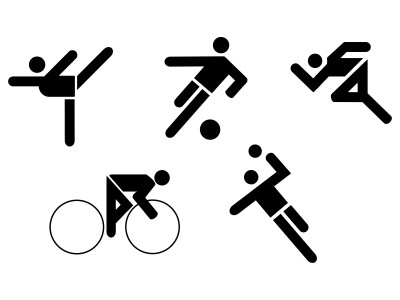Functional Training for You
Written by: Paul Kochoa, PT, DPT, OCS, CKTP, CGFI
Back in 1992, in the Rutgers University Busch campus gym (The Sonny Werblin Recreation Center), I worked with a exercise physiologist who only did “multi-jointed” exercises. He would educate all the staff on the difference between the traditional exercise routine at the time, and the new “multi-joint” way to do things. He turned the simple bicep curl into a multi-step, multi-angle movement that resembled picking up a suitcase than the traditional “welcome to the gun show” exercise. This stuck with me, but I believe that it was a little ahead of its time.
New ways to work out and exercise is nothing new, just stay up late one night and you can see several infomercials about new toys to use to flatten your gut or lose weight. One benefit of all those products is that they may get people off the couch and moving. Thirty minutes a day 3-4 days a week is all it takes. Obesity is an epidemic and it needs to be confronted any way you can do it.
Functional training is another tool. It’s not a fancy gadget or a gimmick, but a type of philosophy of exercise. Functional training involves multiple joints in multiple planes of movement, requires a higher degree of neuromuscular control, and is a well controlled motion that mimics sport or functional positions. It is very similar to the type of movement that exercise physiologist used with his “multi-joint” exercise routine.
I once read that nobody does bench presses anymore, when it comes to functional training, that may be true. Functional training involves several joints moving against gravity or an external resistance in multiple planes. It also involves more neuromuscular control, meaning that lying on a bench with your back supported or sitting on a machine is out. When you’re supported by a bench or chair, your core muscles don’t have to work. Functional training requires your core muscles to control and stabilize your body while your other limbs are lifting or moving a weight. Sure, working out on a machine may be safer and easier than using weights, but does the strength gains relate to movements in everyday life or in sports?
Exercise with kettlebells is a form of functional training (if done properly), another one is the TRX suspension training system, basically anything where your body is in an upright position, moving against a resistance, and not supported by a bench or chair. These are the type of exercise, when performed properly, can show the greatest carryover into sports and everyday movements.
Feel free to ask about Functional training the next time you see your trainer or physiotherapist. If you would like more information, please call Professional Physical Therapy and Training at 973-270-7417. Our offices are located within the YMCA locations in Madison and Summit, NJ. You do not need to be a member of the YMCA to visit with us.
Image courtesy of Salvatore Vuono / FreeDigitalPhotos.net